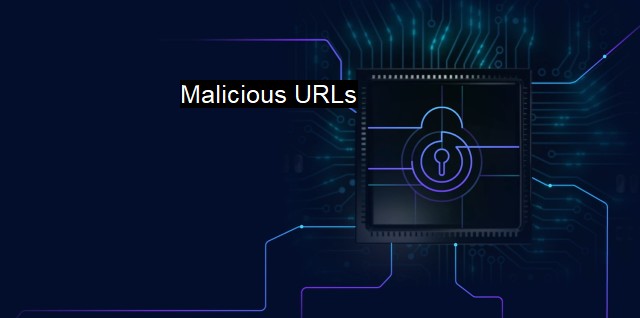What are Malicious URLs?
Understanding the Threat of Malicious URLs: Impact on Cybersecurity and Antivirus Compatibility
Malicious URLs refer to websites and web addresses specifically designed to cause harm to a computer, network or user. The main intention of these URLs is to carry out malicious activities like malware installation into a system, direct phishing attacks, initiate intrusion attempts, or implement other forms of cybercriminal activity. Attackers often use sophisticated techniques to effectively hide these harmful URLs' true intentions, making it challenging for a regular user to recognize them.A typical cybersecurity threat that malicious URLs continue to pose is their significant role in malware distribution. Malware is any piece of software created deliberately to harm the computer system or network it infiltrates. A common method attackers employ is to craft emails that seem legitimate, complete with persuasive messages and malicious URLs disguised as reliable sources.
When a user unknowingly clicks on these URLs, they could be unwittingly installing a malware component into their system. Consequently, the installed malware may enable attackers to seize control of the affected machine or network completely. It could mean the loss of sensitive dataset, impairment of integral system functionalities, or unauthorized information access.
Another peril of malicious URLs is phishing attacks, one of the most sophisticated scams in today's digital space. Fraudsters design phishing URLs cleverly; they look nearly identical to those of established institutions like banks or popular online platforms. When users click on these URLs, thinking they are the original ones, they end up accessing fraudulent sites masquerading as authentic sites. Once they enter their login credentials in these fraudulent sites, the attackers gain unauthorized access to the users' sensitive information which they can use for harmful purposes.
Malicious URLs also engage in illicit activities like cryptojacking, a cybercriminal act where hackers exploit the computing resources of unsuspicious victims for cryptocurrency mining. They achieve this by incorporating malicious mining scripts under the guise of legitimate URLs. This exploitation often happens unbeknownst to the victim until system performance deteriorates, energy consumption spikes, or hardware resources damage.
Detecting malicious URLs is no easy feat due to hackers getting smarter with their scams and attacks. the advent of cybersecurity measures like antivirus software offers hope. Antivirus software functions based on databases of known threats and their signatures. When it encounters known malicious URLs, the software works to nullify and prevent access to reduce the threat of cyberattacks significantly.
There are also URL filtering services which refer to a type of internet security system that limits user access to certain URLs. If an accessed URL is questionable, the filtering service blocks it to deter malware infiltration or phishing invasion before it can cause any damage to the user's machine or network.
Implementing a risk-adaptive security model can also help in steering clear from malicious URLs. This method employs assessment of users’ behavior on the network to detect any deviations from their normal patterns that could indicate exposure to a potential cybersecurity threat.
It's important for users to be alert when surfing the web, scrutinizing the content of emails they receive, and watching out for any irregularities in URLs. ensuring that all system software, applications, and antivirus programs are constantly up-to-date amplifies their chances of keeping malicious attacks at bay. Cyber threats amplify with significantly advancing technologies, but making informed decisions when clicking URLs and investing in robust cybersecurity measures can save users the trouble posed by dangerous cyber attacks.

Malicious URLs FAQs
What are malicious URLs?
Malicious URLs are websites or web pages that have been designed to harm your computer or steal your personal information. They are often used in cyber attacks or phishing scams.How can I avoid clicking on malicious URLs?
You can avoid clicking on malicious URLs by being careful when opening links in emails or messages from unknown senders, and by using a reputable antivirus software that can detect and block dangerous URLs. You can also hover over the link to see if the URL looks legitimate before clicking on it.What should I do if I clicked on a malicious URL?
If you clicked on a malicious URL, you should immediately close the web page and run a virus scan on your computer. If you entered any personal information on the web page, you should also monitor your credit card and bank statements for any suspicious activity.Can antivirus software protect me from all malicious URLs?
No, antivirus software cannot protect you from all malicious URLs. Some new and sophisticated malware can bypass antivirus programs. However, using a reputable antivirus software can still significantly reduce the risk of getting infected by malicious URLs. It's important to keep your antivirus software updated to have the best possible protection.| | A | | | B | | | C | | | D | | | E | | | F | | | G | | | H | | | I | | | J | | | K | | | L | | | M | |
| | N | | | O | | | P | | | Q | | | R | | | S | | | T | | | U | | | V | | | W | | | X | | | Y | | | Z | |
| | 1 | | | 2 | | | 3 | | | 4 | | | 7 | | | 8 | | |||||||